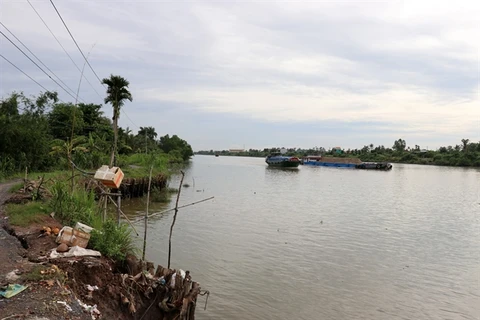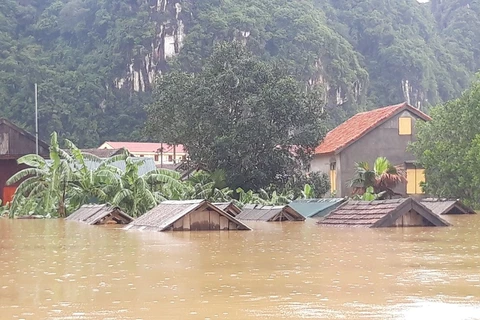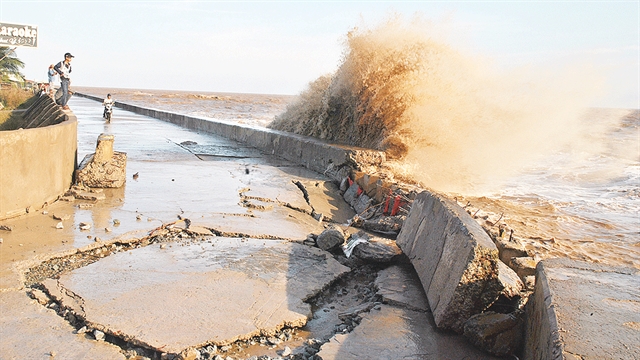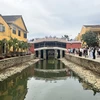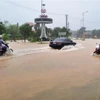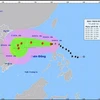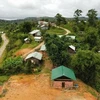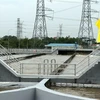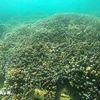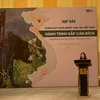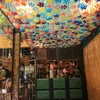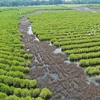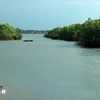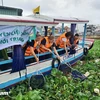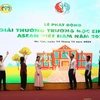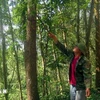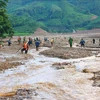HCM City (VNS/VNA) - More people in the Mekong Delta are planting trees and building embankments made of natural materials to prevent erosion along rivers and canals.
The delta, which has a dense river and canal network, has faced increasing erosion along rivers and canals in recent years because of human activity and climate change.
In Hau Giang Province, the Irrigation Sub-department built three natural embankments with a total length of 380 metres on a pilot basis to prevent erosion in Phung Hiep District and Nga Bay Town in 2017.
The natural embankments are made by filling eroded areas with soil and setting up a barrier made of cajuput trunks or bamboo between the embankments and water.
Cajuput and crabapple mangrove trees are planted inside the barriers so that their roots prevent soil erosion. Permeable fabric or fine nets are installed outside the barrier to hold the soil.
At the embankments, water hyacinths are grown along banks to reduce the strength of waves hitting the banks.
In Phung Hiep District’s Bung Tau Town, more than 100 households, mostly along the Bung Tau and Ngang canals, have built such embankments along the canal bank in front of their houses.
Nguyen Truong Sanh in Bung Tau’s Tan Phu A2 Hamlet said he built an embankment on a 10 metre stretch of the canal two years ago and it cost only about 500,000 VND (22 USD). Local authorities provided him free cajuput trees to grow on the embankment.
Later, he expanded the embankment to more than 100 metres long.
“The embankment is stable now, and the cajuput trees have grown and provide shade and look beautiful,” he said.
Local households in Bung Tau grow other trees like đien đien (Sesbania sesban) and ca na (Elaeocarpus hygrophilus) on such embankments and harvest đien đien flowers and ca na fruits for sale.
In Hau Giang, the Chau Thanh District Farmers Association has built natural embankments to farmers to protect their lands along rivers and canals from erosion.
Nguyen Thi Be in Chau Thanh’s Dong Phuoc A Commune said: “After the commune’s Farmers Association supported the model, we agreed to build such embankment.”
She has also donated bamboo plants and other trees to plant on the embankment.
Chau Thanh has four such embankments, according to the district Farmers Association. The association plans to expand the model to erosion-prone areas and grow more crabapple mangrove trees on natural embankments.
Hau Giang now has about 200km of natural embankments, according to the Irrigation Sub-department.
Localities in the delta are also expanding the model of planting trees along river and canal banks to prevent erosion.
In Ca Mau Province, people have planted mangrove trees along banks to prevent erosion since their roots are thick and protect the soil.
Natural embankments made by planting mangrove trees are popular in the districts of Cai Nuoc, Nam Can and Dam Doi in Ca Mau.
In Dong Thap Province, water hyacinths are grown near riverbanks and crabapple mangrove trees planted at river banks to prevent erosion in Lai Vung District.
In Lai Vung’s Tan Duong Commune, people in Tan Thuan A and Tan Thuan B have done the same along the Sa Dec – Vam Cong River.
Nguyen Thi Phuong in Tan Duong said they provide shade and beautiful view, and stabilise the soil.
“Seeing the effectiveness of the model, many people have planted hyacinth and crabapple trees to protect the riverbank in front of their house,” she said.
Nguyen Tan Tai, chairman of the Tan Duong Farmers Association, said the model is low cost and is efficient. It is being expanded throughout the delta./.
VNA

